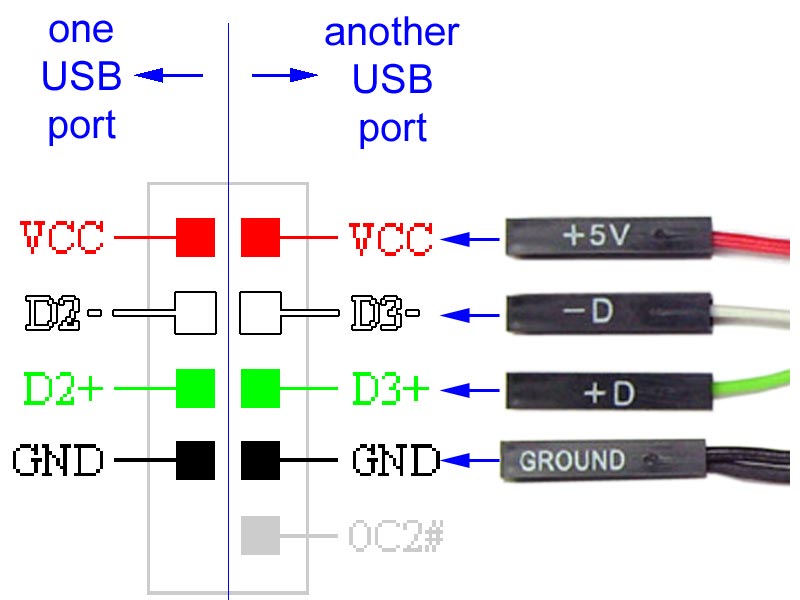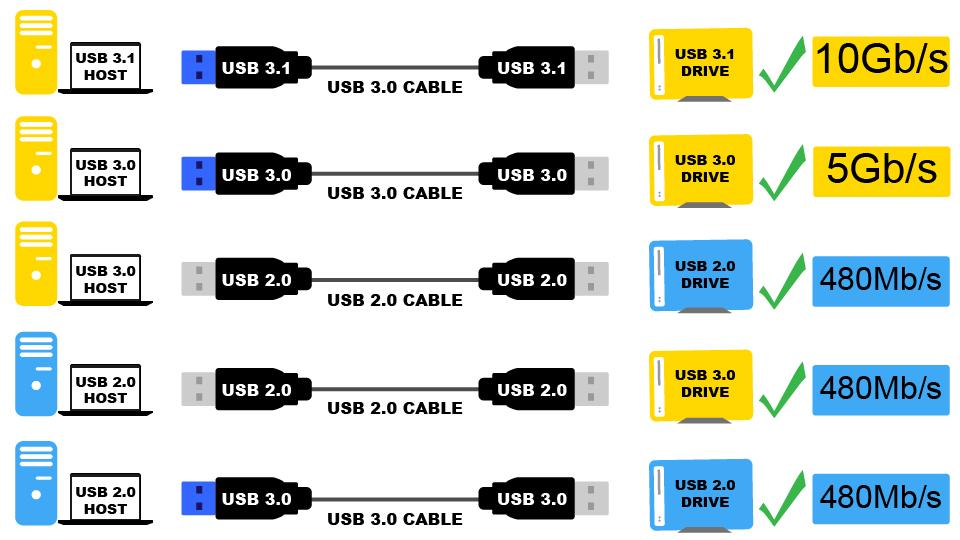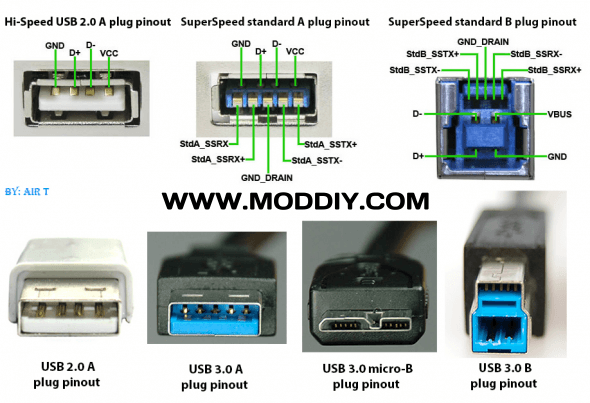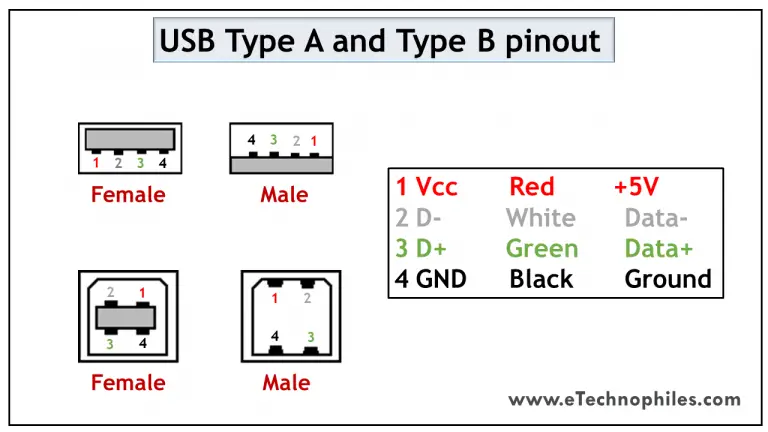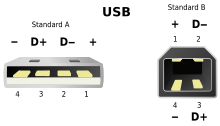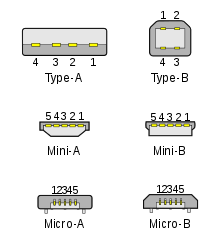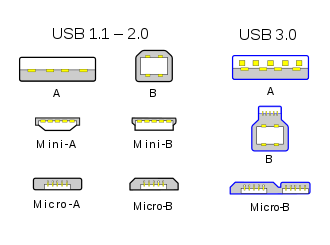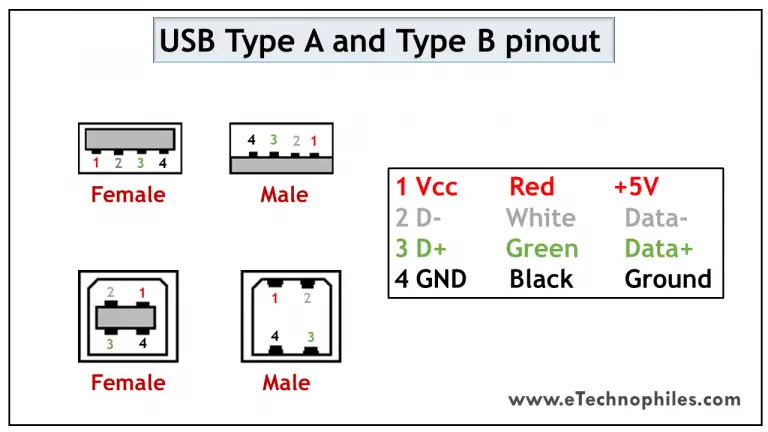USB Connector Types: Mini USB Connectors & Pinouts 19 Nov 2018 USB cables come with five different basic types of USB connector: types A, B, micro B, mini B, and C. The mini connector is common on older non-Apple mobile phones and other portables. However, the USB micro has largely replaced the mini in recent years, and USB-C may soon replace the micro. USB cables come with five different basic types of USB connector: types A, B, micro B, mini B, and C. The mini connector is common on older non-Apple mobile phones and other portables. However, the USB micro has largely replaced the mini in recent years, and USB-C may soon replace the micro. The mini connector is compatible with the first and second-generation USB standard, but was replaced by micro prior to the development of USB 3.0. The standard mini USB connector has five pins: Looking at the mini connector on a cable, pins are numbered 1-4 (X included), ascending, from left to right. All wires are shielded, and the data wires (positive and negative) are a twisted pair requiring no termination. Since it’s no longer certified for new devices, the USB mini connector will likely fade from use in the near future. Check out the USB mini B connector pinout below: Fig 1: Mini USB Type B connector pinout
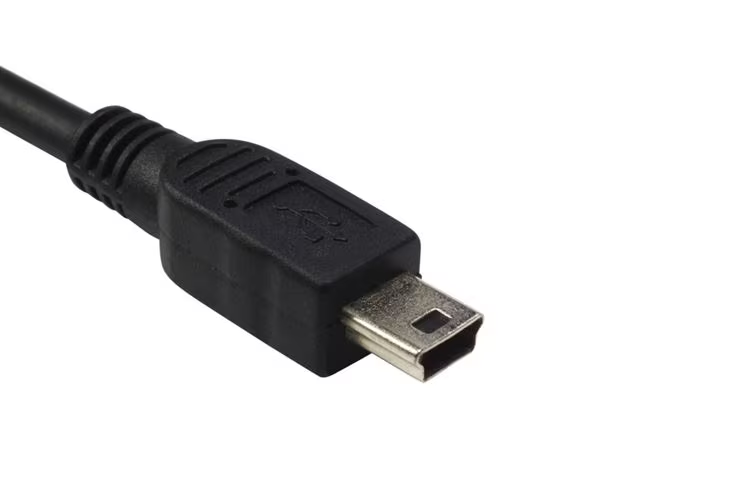 USB Connector Types: Mini USB Connectors & Pinouts
19 Nov 2018
USB cables come with five different basic types of USB connector: types A, B,
micro B, mini B, and C. The mini connector is common on older non-Apple mobile
phones and other portables. However, the USB micro has largely replaced the mini
in recent years, and USB-C may soon replace the micro.
The mini connector is compatible with the first and second-generation USB
standard, but was replaced by micro prior to the development of USB 3.0.
The standard mini USB connector has five pins:
USB Connector Types: Mini USB Connectors & Pinouts
19 Nov 2018
USB cables come with five different basic types of USB connector: types A, B,
micro B, mini B, and C. The mini connector is common on older non-Apple mobile
phones and other portables. However, the USB micro has largely replaced the mini
in recent years, and USB-C may soon replace the micro.
The mini connector is compatible with the first and second-generation USB
standard, but was replaced by micro prior to the development of USB 3.0.
The standard mini USB connector has five pins:
 Looking at the mini connector on a cable, pins are numbered 1-4 (X included),
ascending, from left to right. All wires are shielded, and the data wires
(positive and negative) are a twisted pair requiring no termination.
Since it’s no longer certified for new devices, the USB mini connector will
likely fade from use in the near future. Check out the USB mini B connector
pinout below:
Fig 1: Mini USB Type B connector pinout
Looking at the mini connector on a cable, pins are numbered 1-4 (X included),
ascending, from left to right. All wires are shielded, and the data wires
(positive and negative) are a twisted pair requiring no termination.
Since it’s no longer certified for new devices, the USB mini connector will
likely fade from use in the near future. Check out the USB mini B connector
pinout below:
Fig 1: Mini USB Type B connector pinout
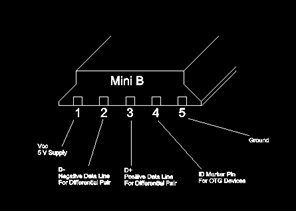 =======================================================
=======================================================
From: https://www.arrow.com/en/research-and-events/articles/micro-connector-usb-pinout
Micro USB Pinout Explained 19 Nov 2018
=======================================================
=======================================================
From: https://www.arrow.com/en/research-and-events/articles/micro-connector-usb-pinout
Micro USB Pinout Explained 19 Nov 2018
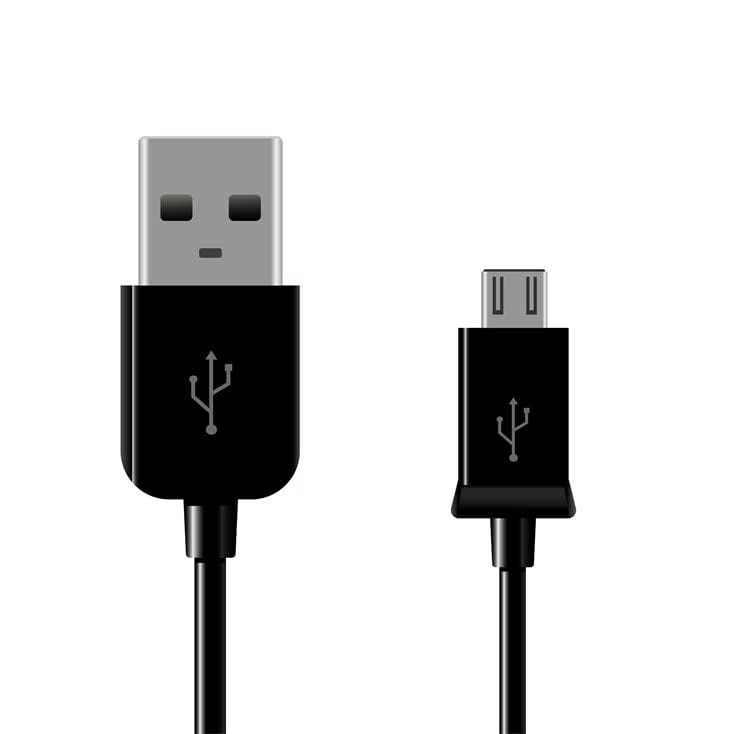 USB cables come with one of five different basic types of USB connector: A, B,
mini B, micro B, and C. The micro connector comes standard on most non-Apple
mobile phones and many other portables, though USB-C connectors are slowly
replacing them in the newest generation of devices.
USB cables come with one of five different basic types of USB connector: A, B,
mini B, micro B, and C. The micro connector comes standard on most non-Apple
mobile phones and many other portables, though USB-C connectors are slowly
replacing them in the newest generation of devices.
The USB Standard The standard micro connector is available only up to the second-generation USB standard, though a less common and much wider 3.0 version exists. The 3.0 version offers: - Better transfer rates than 2.0, but it’s less practical than the smaller and faster USB-C connector. - Receptacles that can accept older generation cables, but older receptacles cannot accept 3.0 cables. The standard micro connector has five pins in its older generations and ten pins in the less common 3.0 generation:
